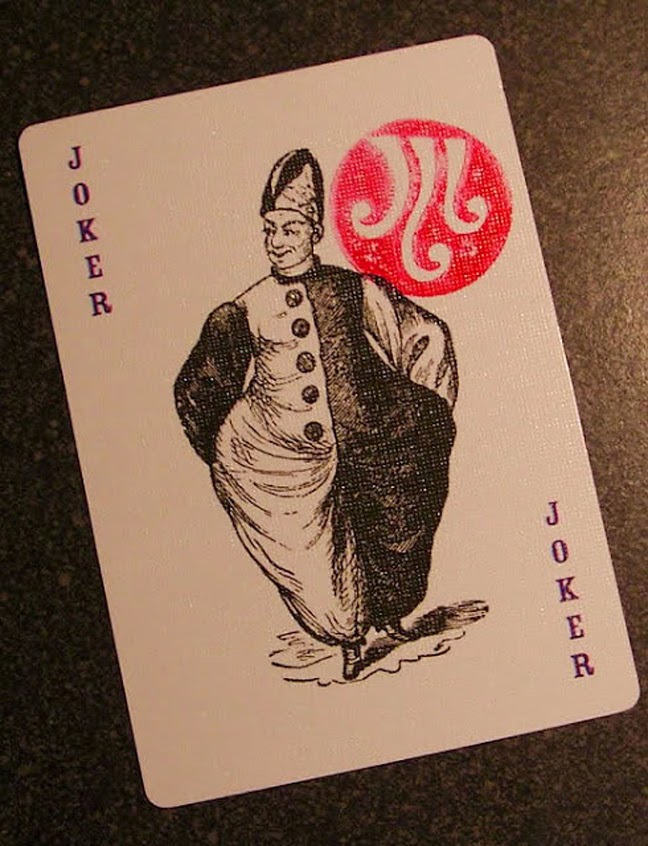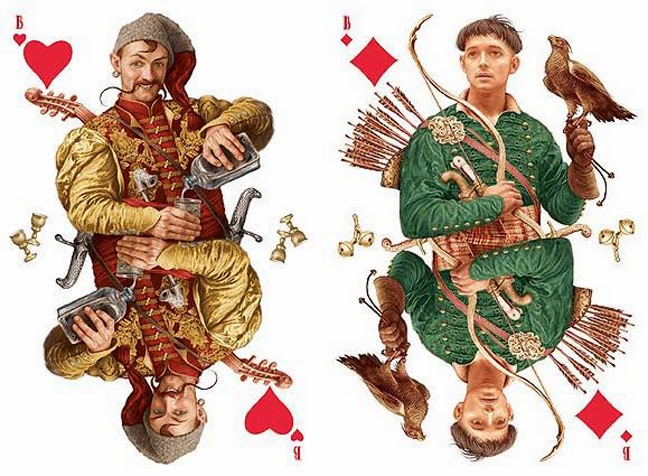And God… shuffled the deck. Initially, the word "deck" comes from the Italian word "trappola", which means "trap" and "deceit", it consists of course, of playing cards.
The deck came from the Italian game "taro" or "taro" which was played with thick squares or rectangular cards with numbered figures for both entertainment and speculation. This, in turn, comes from the "Tarot deck".
Most likely, the simple deck and the Tarot initially coexisted, in parallel, then were combined and later again differentiated. This is in relation to the most recent historical past of the deck because its origin, uncertain, is lost in time, in myths and traditions.
The story of the deck
Who shuffled the cards first? This is because her paternity is rather a mystery. Four countries and peoples are arguing over who first seized it, but the view of the Arabs is judged to be more powerless. It is a fact that the Arabs contributed to the spread of some forms of deck, possibly bringing about changes in them, but they were not the ones who invented the deck.
However, a more probable view from this is that these strange playing cards first appeared in Egypt, at an unsuspecting time, with religious images on them. Occultists even embrace this view more and consider that the invention of playing cards dates back to before the printed word, that the deck was the first form of "book" and that playing cards, in the form they had then, symbolically reflected the primitive knowledge, a part of the worship of the Egyptian god Toth and with their help the fate of the people and their future could be predicted, advice given to them and the will of the gods explained.
Proponents of this view believe that these primordial "Leaves of Fortune" or "Tarok" are the "spiritual ancestor" of all playing cards and that their most authentic form has survived as "Tarok of the Bohemians" and already as a deck called " Toth Tarot ".
The most prevailing and most argumentative view, however, is the one that connects the deck with China, where, as is well known, paper was also invented. So it seems that playing cards first appeared here between the 7th and 10th centuries, in the beginning they could even be used as banknotes at the same time, as some historians believe. The similarity, however, of Chinese banknotes and Chinese playing cards is remarkable.
Playing cards are considered an evolution of Chinese dominoes, the medicine of boredom. According to a version found in the Chinese encyclopedia - Qing-Zhe-Tung Dictionary of 1678, the 12th-century Chinese emperor Sen-ho instructed his sages to find an antidote to the boredom of the three hundred palaces in the palace. , when a sage brought him a collection of small, beautifully decorated, ivory plates, with which, according to him, many different games could be played. Both the emperor and his concubines were excited and now the problem of boredom was solved. Ο Τ.Φ. Kaiter, however, in his book The Invention of Typography in China, refers to gambling in China as early as at least 969.
The only thing that is certain is that the deck is not a European invention, since it came to it from Asia. By whom; And there are many theories on this issue: Either from the Crusaders, who learned it from the Tatars, or from the Arabs of Spain, in the 14th century, or, again in the 14th century, from the Saracens who invaded Sicily, who they called it "naibi", or, in other words, through the Roma gypsies or the Mamluks.
The Italian and Spanish word for playing cards has Arabic origins, which advocates the transfer by the Arabs or the Saracens or the Crusaders. On the contrary, the view conveyed by them suffers from the fact that the decks appeared in Europe before most Gypsies. Undoubtedly, however, the latter, with their travels and their involvement with paper divination, contributed greatly to the spread of the use of the deck.
It is very possible that different forms of decks arrived in Europe, gradually and with a small time difference, from different channels, which then interacted or even merged.
In any case there are reports that playing cards appeared in Italy in 1299, in Spain in 1371, in the Netherlands in 1379 and in Germany in 1377, while a relevant reference is found in a French manuscript of the early 14th century, in a French poem of 1328 and in another document of the archive of Charles VI, in 1392.
Charles V, in 1369, aiming at the spread of archery, forbade his subjects to engage in other games, explicitly named in the relevant decree, which, however, do not include cards. Earlier, however, Charles IV is said to have had fun playing cards for many hours during his long illness. Also preserved is a document from the court of Brabant, from 1379, which mentions the purchase of a deck on behalf of the royal couple, namely King Wenceslas of Luxembourg and Queen John of Brabant.
The numerous references to playing cards and gambling that have been observed since 1370 in all the countries of Western Europe are impressive, a fact that proves their rapid spread and acceptance, while it is worth noting that Dante does not mention them at all. There does not appear to be an exact date when they arrived in England, but in 1463, local manufacturers sought state protection against imported types that competed fiercely with domestic products.
In Eastern Europe they arrived at the end of the 15th century, which excludes the view, also proposed, that playing cards were introduced through Eastern Europe and even through the gypsies, while in America probably already from the time of Columbus. What is certain, however, is that already in the middle of the same century, the Spaniards had transmitted them to the Aztecs of Mexico, whose occupation had already become very popular.
As for the Byzantines, there is no evidence of decks, which obviously means that they did not get to know them. There is also no evidence (eg from travelers) of the use of playing cards in Turkish-occupied Greece, without proving with certainty that such a thing did not happen. On the contrary, cards were played in the Venetian-occupied Ionian Islands, from where the custom later passed to some areas of the Peloponnese and Central Greece (then Roumeli).
The playing cards used were of the Venetian type, with ancient representations, while the prevailing terminology was Italian and French and generally of European origin and, however, not Turkish, which probably proves that the deck came to Greece from the west and not from East.
From 1884 onwards the printing and marketing of playing cards belonged to the Monopoly of the Greek state
How the deck is divided
The deck of a deck consists of 52 to which are added two cards with the image of the Harlequin or Hermes or "Joker", divided into two colors (black and red) of 26 cards and each color in two different species.
Thus four different rows of 13 cards are formed, the following: Red Carts (squares), Red Cups (hearts), Black Swords (clovers) and Black Spades (sticks). Of the 13 cards, 10 represent numbers from 1 to 10 and the other three "figures" namely Rigas (king with a beard), Queen (woman or girl) and Vale or Fantis.
In a deck there are:
• 52 sheets, as many as the weeks of the year
• 13 leaves of each "color" (race), as many as the weeks of a season or those of the lunar months
• 4 "colors" (races), as many as the weeks of the month
• 12 figures, as many as the months of the year






